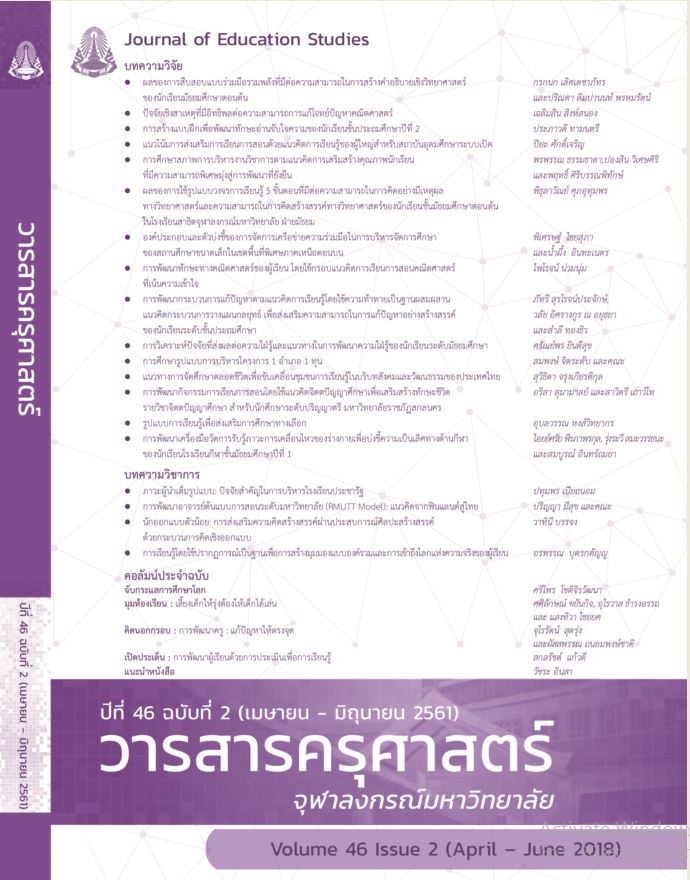การวิเคราะห์ปัจจัยที่ส่งผลต่อความใฝ่รู้ และแนวทางในการพัฒนาความใฝ่รู้ของนักเรียนระดับมัธยมศึกษา
Keywords:
ANALYSIS, FACTOR, CURIOSITY, SECONDARY EDUCATIONAbstract
Abstract
The purposes of this research were: 1) to determine secondary school students’ needs in curiosity, 2) to analyse the factors affecting the secondary school students’ curiosity, and 3) to analyse the proper methods in developing students’ curiosity. The population consisted of secondary school students in schools under the Office of Bangkok Service Area and the sample included 665 secondary school students which were used to collect the data through multistage-random sampling. The data were collected with questionnaires, which had a reliability score of .957, and interviewing. Then, the quantitative data were analyzed by descriptive statistics and independent sample t-test and Multiple Linear Regression. The qualitative data were used to analyze the contents. The research results were as follows: 1) The curiosity of the secondary students in the school under the Office of the Basic Education Commission and the Office of Higher Education Commission was at an intermediate level but require urgently needs in curiosity. 2) The analysis of factors affecting curiosity indicated that the learning environment was related to curiosity the most. These factors can significantly predict the curiosity level of secondary students up to 67 percent, such as self-esteem, motivation, learning environment and classroom activities. 3) The proper method in curiosity development is to create a learning society in school that is constantly supported by the family.




